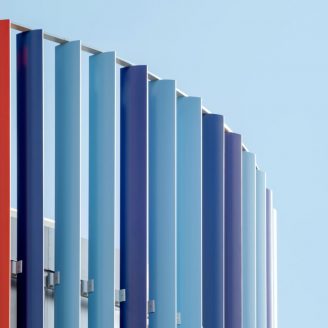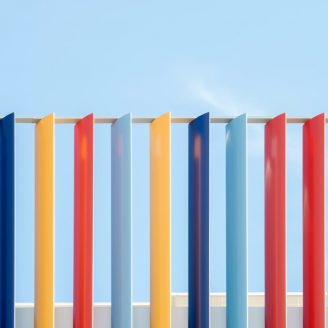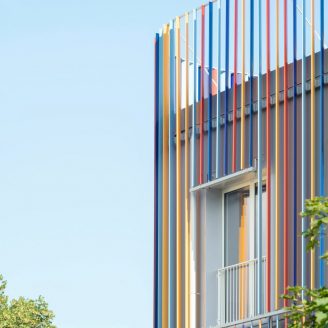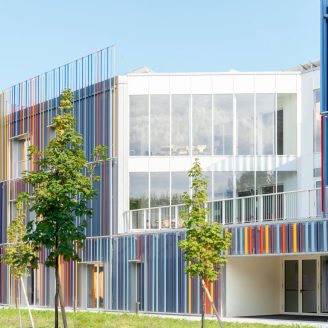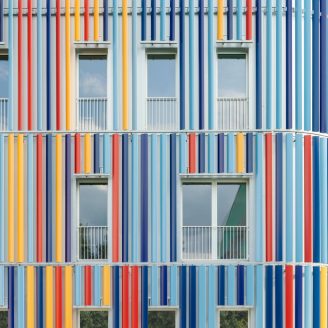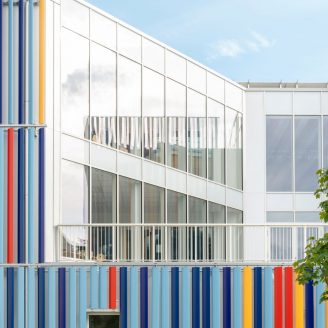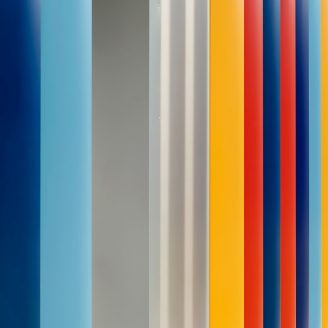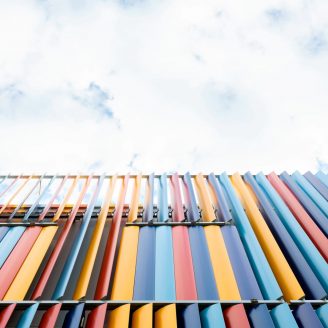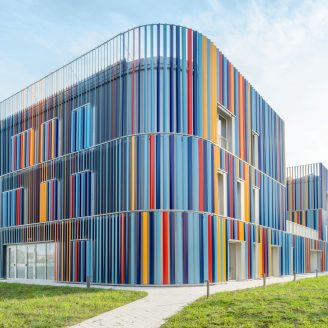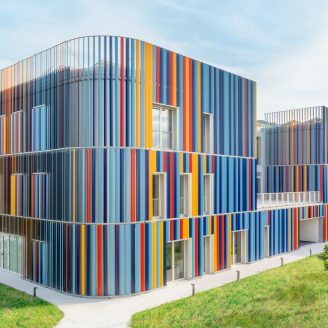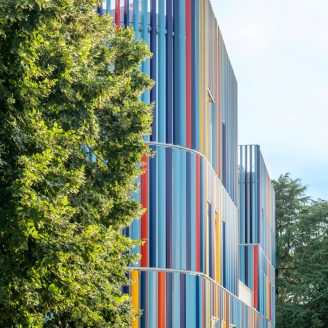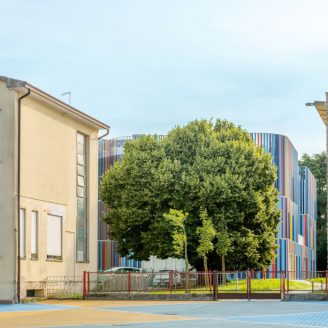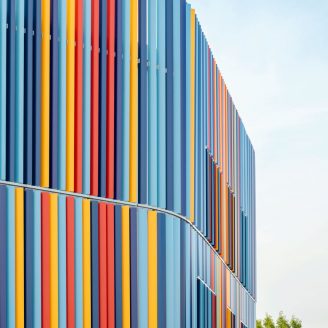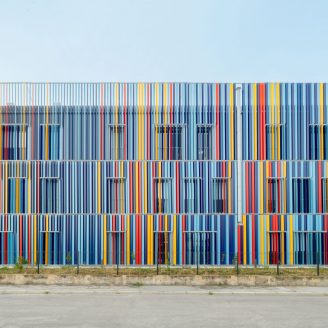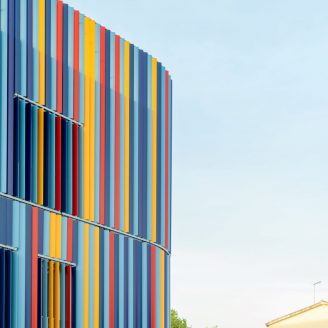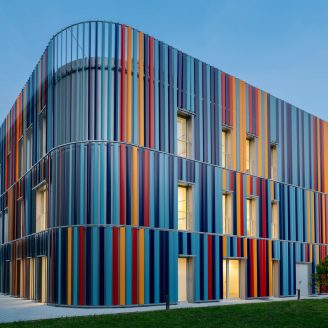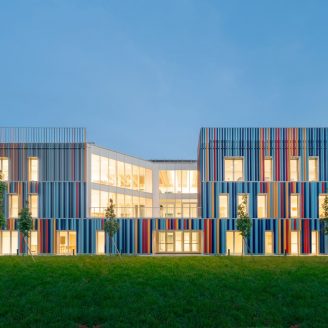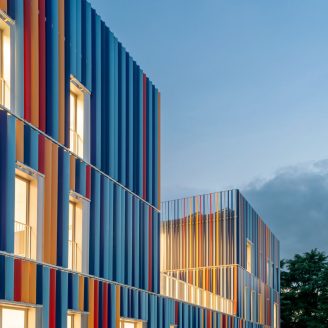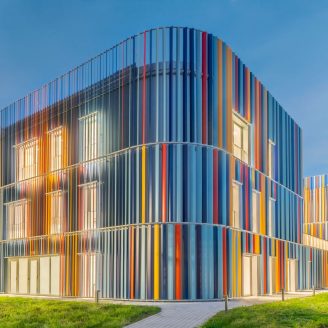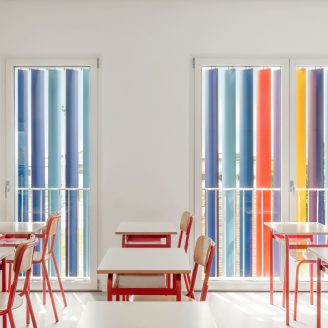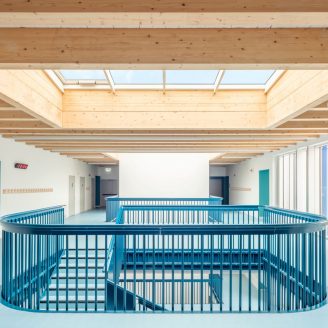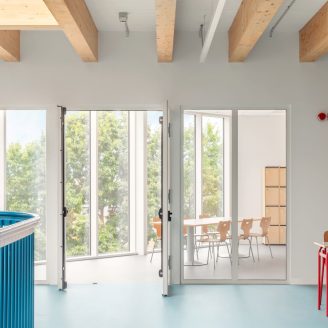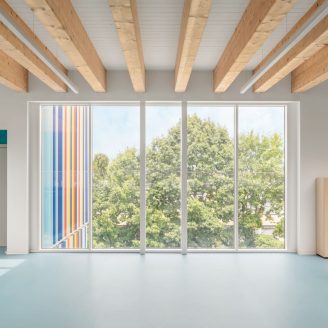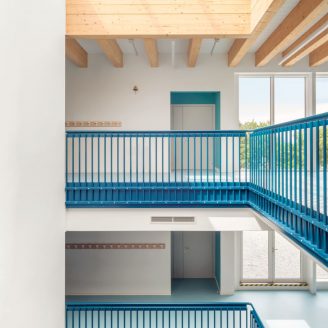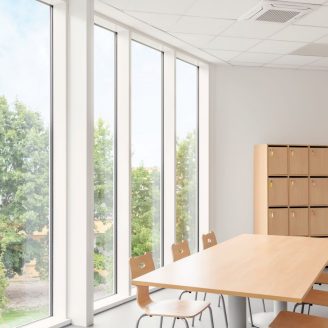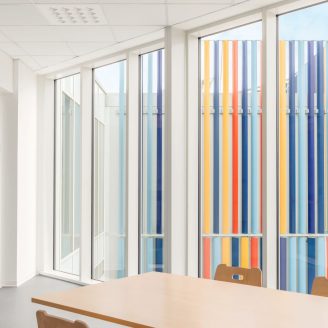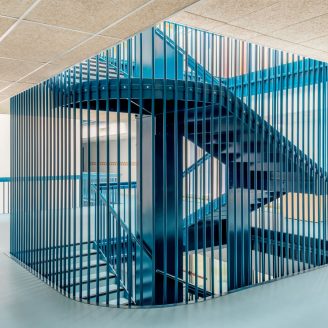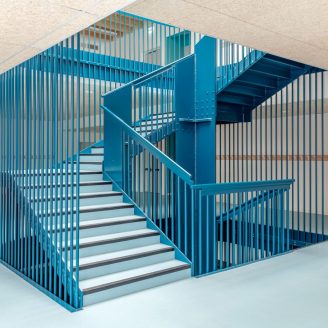In order to respond the need to expand and strengthen the undersized and unsuitable existing secondary school, the new “Cardinale Agostinelli” school center in S. Martino di Lupari (Padua), designed by Settanta7 studio, gives back to the community a project capable of integrating inclusive school environments and spaces characterized by flexibility for new teaching needs.
The new building is spread over three floors above ground and is located in the internal courtyard of the the existing former school. It presents a rectangular shape with rounded corners which allow greater permeability and connection within the lot; an external casing covered in highly technological, innovative skin.
ARCHITECTURE
The new building can accommodate 525 students in 21 classrooms for educational activities, 4 laboratories, a large multifunctional connective space on each floor which hosts two reading areas on the first and second floors, classrooms for teachers on each floor and services.
The rooms are arranged around the four sides of the large central connective space, which thus takes on a distributive function as well as a relational and welcoming one. An “excavation” in the compact shape of the building, which houses a large terrace on the first floor, guarantees natural lighting and ventilation to the connecting spaces.
The vertical distribution takes place via a central stairwell, illuminated by a large skylight on the roof. For the interiors, materials were chosen that met high durability standards, chosen on the basis of the EPD (Environmental Porduct Declaration) environmental declaration, an identity card of the degree of sustainability of the material.
With the aim of restoring a natural ecosystem within the lot, particular care was taken in the design of the external areas and in the relationship between the building and the surrounding environment through in particular the reduction of the current impervious surface and new green areas, thanks to the planting of new native tree species compatible and similar to those already present with high resistance to drought.
TECHNOLOGY
An environmentally sustainable school complex, with high energy efficiency and the aim of achieving nZEB building classification. To respond to all the previous needs, the design was oriented towards following the principles of one of the most important international rating systems: the LEED© protocol.
The structural construction technology chosen for the new school complex is X-lam load-bearing walls, for the opaque walls, the best package composition was evaluated from the point of view of thermal compliance. The glass parts are made with thermally broken aluminum frames and low-emissivity double glazing, paying particular attention to controlling the surface temperature.
The entire building envelope is made up of sandwich wall panels composed of a double metal cladding with mineral wool insulation. A sunshade system with vertical slats, made up of press-bent aluminum sheet blades pre-painted in bright colours, completes the project.


